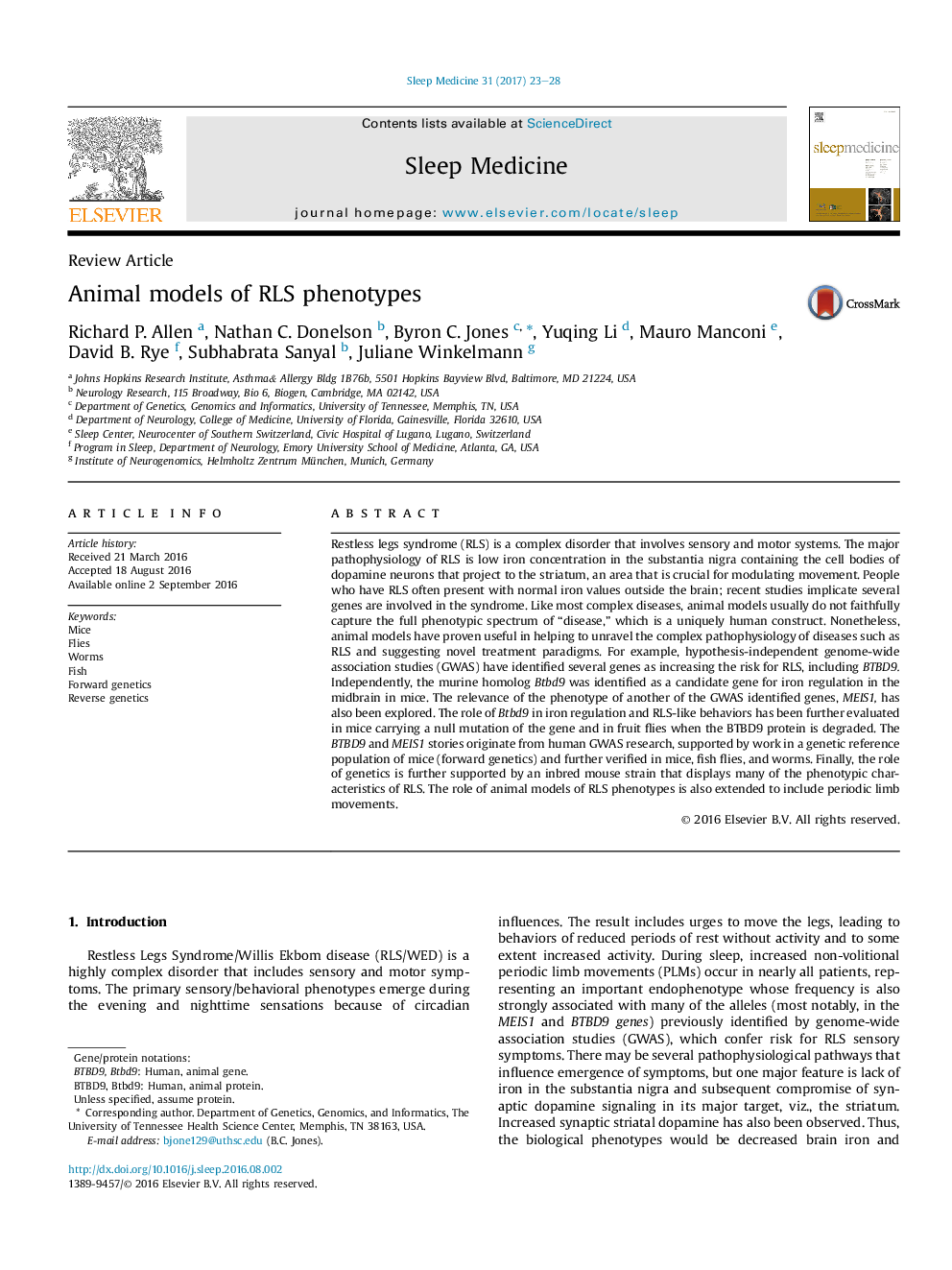| کد مقاله | کد نشریه | سال انتشار | مقاله انگلیسی | نسخه تمام متن |
|---|---|---|---|---|
| 5643784 | 1586478 | 2017 | 6 صفحه PDF | دانلود رایگان |

- Animal models of RLS varying by species and complexity are presented.
- Forward and reverse genetic models are described and compared.
- Animal models in genetic reference populations complement human GWAS studies.
Restless legs syndrome (RLS) is a complex disorder that involves sensory and motor systems. The major pathophysiology of RLS is low iron concentration in the substantia nigra containing the cell bodies of dopamine neurons that project to the striatum, an area that is crucial for modulating movement. People who have RLS often present with normal iron values outside the brain; recent studies implicate several genes are involved in the syndrome. Like most complex diseases, animal models usually do not faithfully capture the full phenotypic spectrum of “disease,” which is a uniquely human construct. Nonetheless, animal models have proven useful in helping to unravel the complex pathophysiology of diseases such as RLS and suggesting novel treatment paradigms. For example, hypothesis-independent genome-wide association studies (GWAS) have identified several genes as increasing the risk for RLS, including BTBD9. Independently, the murine homolog Btbd9 was identified as a candidate gene for iron regulation in the midbrain in mice. The relevance of the phenotype of another of the GWAS identified genes, MEIS1, has also been explored. The role of Btbd9 in iron regulation and RLS-like behaviors has been further evaluated in mice carrying a null mutation of the gene and in fruit flies when the BTBD9 protein is degraded. The BTBD9 and MEIS1 stories originate from human GWAS research, supported by work in a genetic reference population of mice (forward genetics) and further verified in mice, fish flies, and worms. Finally, the role of genetics is further supported by an inbred mouse strain that displays many of the phenotypic characteristics of RLS. The role of animal models of RLS phenotypes is also extended to include periodic limb movements.
Journal: Sleep Medicine - Volume 31, March 2017, Pages 23-28